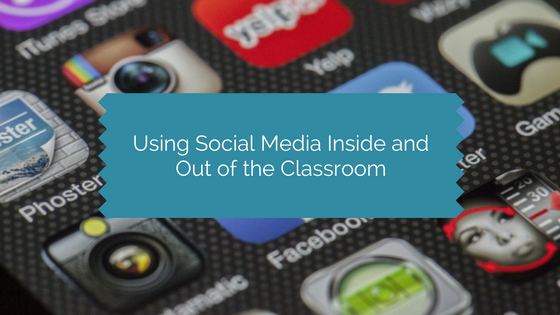
The proliferation of social media channels in just a few short decades has led to a new generation of tech-savvy students with an unprecedented functional level of computer skills coming into college. As a way to improve teaching methods, professors have begun trying to find ways to incorporate these social media outlets into their lesson plans; these new outlets serve as a streamlined tool towards higher student engagement, applicability, and cheaper interaction with the rest of the academic world. Although social media may come with some apparent costs that do not occur in traditional teaching methods, the benefits of incorporating social media far outweigh the costs.
Social media has great potential for increasing student engagement, particularly outside of the classroom. According to a study by Turner and Thompson (2014), one of the most critical components of student success and completion of college was the “instructor-student relationship.” According to the study, “Students who develop an interactive relationship with the instructor increase the chances of academic success” (101). Social media mitigates the difficulties of maintaining a constant point of contact between the professor and student through a convenient form of access, based on a platform that the student is comfortable with. However, in order for social media to be used as an effective point of communication, as well as remain in a realm of comfort for both the professor and student alike, there must exist a formal system for proper engagement. The use of blogs can perfectly suit the needs of the professor and student; blogs uphold a degree of personal distance that a Facebook connection would not, whereas students still have access to a rapid method of engagement. For example, Professor Krousgill of Purdue University has created an academic blog where “students work on engineering and mathematical problems listed for the course [and] they are encouraged to discuss their solutions together and help each other when they are stumped” (Richardson 2015). The blog format of engagement allows students access to homework help, as well as guidance from the professor, at points where frustration is most likely to inhibit the learning process. However, such a format can also be replicated on Facebook groups; students will be able to post assignments, questions, and thoughtful conversation in a virtual environment with their professor and peers.
The incorporation of social media within the classroom can effectively reduce the cost that would otherwise incur from expanding educational opportunities. It has become a more common occurrence for professors to invite prestigious members of academia to classroom lectures through social media platforms, such as Skype, to save on cost and create ease of access (Abe and Jordan, 2013). Despite the physical barrier between student and lecturer, the overall experiences have been positive. YouTube has also been growing in popularity amongst professors, as the platform gives a lecture greater breadth and potentially more modern sources on which students can relate lecture. Quality instructional videos, documentaries, and primary sources are available on social media platforms that professors can utilize effectively and at low cost. Another way to incorporate social media, which has shown to bolster student multitasking and information retention, is “live-tweeting” responses to lectures (Al-Bahrani et. al. 2015). This can be particularly useful in large classroom environments in which students would have a difficulty traditionally participating in. Although social media’s use in the classroom is still expanding, a steady combination of lecture and online platforms grants students the opportunity to engage in class more flexibly.
Overall, students have shown the most enthusiasm for using social media to engage with their classmates, and potentially other students globally, to create a greater learning community. However, professors have remained hesitant about incorporating a seemingly informal method of learning and communication-namely, professors are worried about the unprofessional aspect of social media. “While it is unreasonable to expect educators to increase their level of self-disclosure through social media such as Facebook, it is important to recognize the benefits of connecting with students as well as to consider alternative ways in which students may be motivated to participate in the classroom” (Abe and Jordan 2013). Incorporating social media can be done appropriately to the benefit of both professor and student. As long as social media assignments and usage are defined clearly in course expectations, social media can positively affect student engagement and reduce costs of broadening the classroom.

